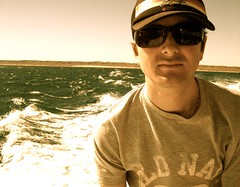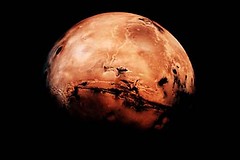I was never a big science student in school - my young brain just didn't compute maths, physics and chemistry. So for me, and this is in the late 90s - not long ago - that's pretty much where science ended (apart from stats which through marketing I learnt to lurrrv).
Back in the day that's all that Science had to offer, there was science hard-core or science fiction and that was it. Science fiction was fun but as the plot was based more around impending alien death, the science of the story never really came through
But what I'm seeing more and more today is that science is learning how to open the door to the lay-people like me and expose a whole new generation to the wonders of science without the need for PhDs or mammoth left brains.
For me two examples really stand out. The first example is the socialising of science for the masses. NASA has been an excellent exemplar of this through its pro-active use of social media and willingness to share discoveries. Probably the most famous example of this is the Mars Phoenix Twitter account where in plain English first-person prose the Rover narrates its discoveries to all who want to listen. To see the extent to which NASA shares its discoveries see their Connect page. Another example of taking real science to the masses in much the same way is the CERN laboratory and the implementation of the Large Hadron Collider, you can follow the world's biggest laser beam on Twitter.
Secondly, social creations of science theory have really stepped up in the past couple years though with concerted efforts to build engaging and accessible ARGs and serious games.
Alternate Reality Games (ARGs) with a science bent have brought the real world of science into an intriguing new realm that is part science fiction but with science squarely the focus of the narrative. Examples of recent implementations include World Without Oil and an ARG currently running in Australia called Bluebird. Bluebird is an ARG developed to further the understanding of Climate Change and the role that Geo-engineering might play in combating it. It's a great concept and by bringing real-world science and debates into a fictional narrative it exploits all modern-day engagement techniques for the youth demographic but firmly puts science as the main character in the story.
Lying somewhere left of ARGs comes serious games. With less narrative and more emphasis on game-play, serious games are attempting to both teach participants information while in a role reversal of sorts, many serious games also try and learn from the experiences of the participants too.
Two examples of serious games that came to light today, that both strangely have similar plots, are Participatory Chinatown - a 3D immersive game aimed to improve the master planning process for Boston's Chinatown precinct; and CityOne - a Sim-city like game developed by IBM to teach people about real world city planning problems (it's fixing leaky pipes time - no more aiming for the ritzy hotel on your block!).
In summary, science doesn't need to start and end in the text-book and many organisations are learning that some of the biggest scientific wins can be made simply by getting lay-people to understand concepts and actively participate in their solutions.
While I can leave many of today's complex theorems to the real boffins, I'm happy that I can now participate in science on a social level.
Image credit: nasa1fan/MSFC
Thursday, May 6, 2010
Subscribe to:
Post Comments (Atom)


2 comments:
Great post, Alex!
If you haven't ever heard radiolab, you should check it out... another brilliant example of "bringing science to the people" - entertaining, educational, and often very funny. One of my favourite podcasts at the moment. Link here!
Radiolab, thanks for the tip! Will definitely check it out.
Post a Comment